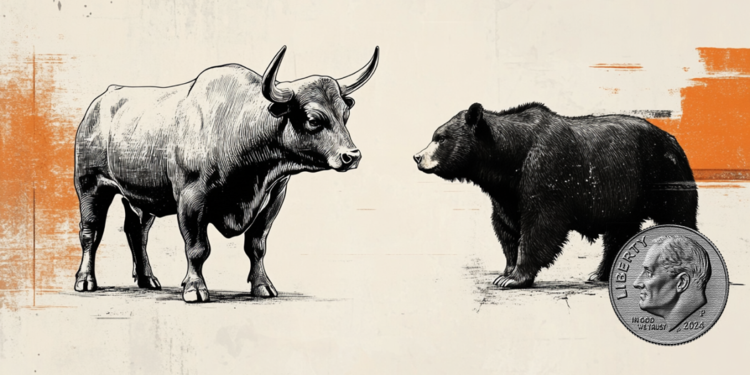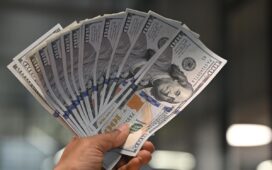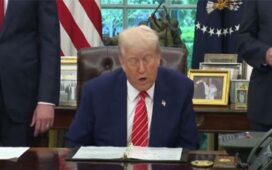- Conflicting White House statements regarding additional levies on Chinese imports create choppy market conditions.
- Investors expect no immediate rate cuts in the first half of the year, aligning with the robust performance of the US economy despite limited Fed official remarks.
- Analysts still attribute the US Dollar’s underlying strength to the US’ enduring economic advantage relative to global peers.
The US Dollar trades flat on Wednesday after two days of losses as the correction aims to continue. Markets are trying to measure the impact of the 10% levy on Chinese goods that President Trump announced on Tuesday. The US Dollar Index (DXY) tests the 108.00 mark and is set to head to the lower end of 107.00. On the Federal Reserve (Fed) side, the bank is in media blackout and with no high-tier economic reports, markets are left with no guidance to bet on the next steps of the data-dependent Fed.
Daily digest market movers: Mixed signals intensify tariff confusion as Fed blackout continues
- President Trump revealed a potential 10% duty on products from China, linking it to broader concerns about fentanyl flows and reiterating that other nations might face tariffs too. This follows earlier rumors that the US administration might hold off on immediate measures, underscoring the contradictory rhetoric.
- Strong US Dollar backdrop remains primarily driven by the US economy’s standout growth despite swirling headlines on trade policy. Analysts suggest that once the tariff fog clears, the US Dollar could reassert its dominance.
- Fed media blackout: Ahead of Chair Powell’s post-decision press conference on January 29, officials have gone quiet. Markets widely predict one rate cut in July, consistent with robust US data.
- Uncertainty around tariffs is heightening volatility, yet currency strategists advise traders to look beyond day-to-day political noise as longer-term US economic momentum remains supportive for the Greenback.
DXY technical outlook: Persistent selling pressure weighs, key levels in play
After bears conquered the 20-day Simple Moving Average (SMA), the outlook turned somewhat bearish as the DXY is now vulnerable to further losses. Should the DXY wish to revive its bullish trajectory, it must overcome 109.30 convincingly.
But failure to defend near-term support levels surrounding 107.50 to 108.00 could spark additional downside. The Greenback’s fundamental posture still leans positive, anchored by economic strength and cautious Fed policy expectations.
Central banks FAQs
Central Banks have a key mandate which is making sure that there is price stability in a country or region. Economies are constantly facing inflation or deflation when prices for certain goods and services are fluctuating. Constant rising prices for the same goods means inflation, constant lowered prices for the same goods means deflation. It is the task of the central bank to keep the demand in line by tweaking its policy rate. For the biggest central banks like the US Federal Reserve (Fed), the European Central Bank (ECB) or the Bank of England (BoE), the mandate is to keep inflation close to 2%.
A central bank has one important tool at its disposal to get inflation higher or lower, and that is by tweaking its benchmark policy rate, commonly known as interest rate. On pre-communicated moments, the central bank will issue a statement with its policy rate and provide additional reasoning on why it is either remaining or changing (cutting or hiking) it. Local banks will adjust their savings and lending rates accordingly, which in turn will make it either harder or easier for people to earn on their savings or for companies to take out loans and make investments in their businesses. When the central bank hikes interest rates substantially, this is called monetary tightening. When it is cutting its benchmark rate, it is called monetary easing.
A central bank is often politically independent. Members of the central bank policy board are passing through a series of panels and hearings before being appointed to a policy board seat. Each member in that board often has a certain conviction on how the central bank should control inflation and the subsequent monetary policy. Members that want a very loose monetary policy, with low rates and cheap lending, to boost the economy substantially while being content to see inflation slightly above 2%, are called ‘doves’. Members that rather want to see higher rates to reward savings and want to keep a lit on inflation at all time are called ‘hawks’ and will not rest until inflation is at or just below 2%.
Normally, there is a chairman or president who leads each meeting, needs to create a consensus between the hawks or doves and has his or her final say when it would come down to a vote split to avoid a 50-50 tie on whether the current policy should be adjusted. The chairman will deliver speeches which often can be followed live, where the current monetary stance and outlook is being communicated. A central bank will try to push forward its monetary policy without triggering violent swings in rates, equities, or its currency. All members of the central bank will channel their stance toward the markets in advance of a policy meeting event. A few days before a policy meeting takes place until the new policy has been communicated, members are forbidden to talk publicly. This is called the blackout period.





